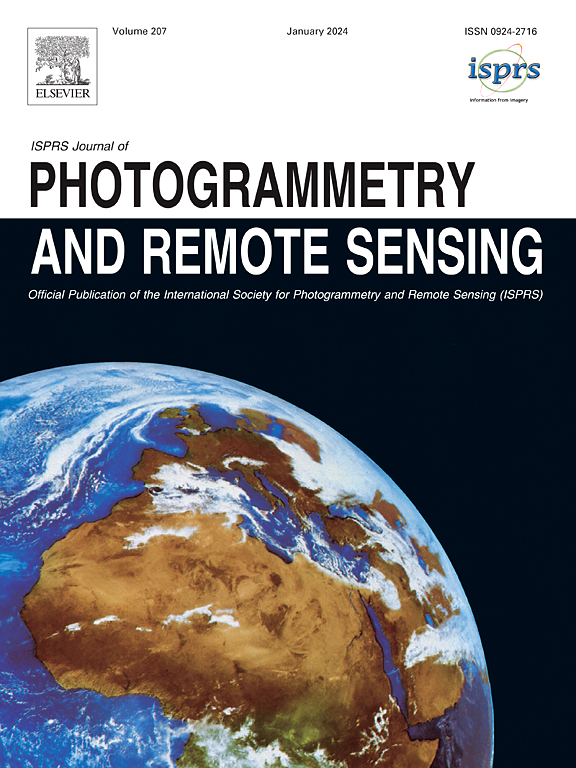PolSAR2PolSAR: A semi-supervised despeckling algorithm for polarimetric SAR images
IF 10.6
1区 地球科学
Q1 GEOGRAPHY, PHYSICAL
ISPRS Journal of Photogrammetry and Remote Sensing
Pub Date : 2025-02-01
DOI:10.1016/j.isprsjprs.2025.01.008
引用次数: 0
Abstract
Polarimetric Synthetic Aperture Radar (PolSAR) imagery is a valuable tool for Earth observation. This imaging technique finds wide application in various fields, including agriculture, forestry, geology, and disaster monitoring. However, due to the inherent presence of speckle noise, filtering is often necessary to improve the interpretability and reliability of PolSAR data. The effectiveness of a speckle filter is measured by its ability to attenuate fluctuations without introducing artifacts or degrading spatial and polarimetric information. Recent advancements in this domain leverage the power of deep learning. These approaches adopt a supervised learning strategy, which requires a large amount of speckle-free images that are costly to produce. In contrast, this paper presents PolSAR2PolSAR, a semi-supervised learning strategy that only requires, from the sensor under consideration, pairs of noisy images of the same location and acquired in the same configuration (same incidence angle and mode as during the revisit of the satellite on its orbit). Our approach applies to a wide range of sensors. Experiments on RADARSAT-2 and RADARSAT Constellation Mission (RCM) data demonstrate the capacity of the proposed method to effectively reduce speckle noise and retrieve fine details. The code of the trained models is made freely available at https://gitlab.telecom-paris.fr/ring/polsar2polsar The repository additionally contains a model fine-tuned on SLC PolSAR images from NASA’s UAVSAR sensor.
求助全文
约1分钟内获得全文
求助全文
来源期刊

ISPRS Journal of Photogrammetry and Remote Sensing
工程技术-成像科学与照相技术
CiteScore
21.00
自引率
6.30%
发文量
273
审稿时长
40 days
期刊介绍:
The ISPRS Journal of Photogrammetry and Remote Sensing (P&RS) serves as the official journal of the International Society for Photogrammetry and Remote Sensing (ISPRS). It acts as a platform for scientists and professionals worldwide who are involved in various disciplines that utilize photogrammetry, remote sensing, spatial information systems, computer vision, and related fields. The journal aims to facilitate communication and dissemination of advancements in these disciplines, while also acting as a comprehensive source of reference and archive.
P&RS endeavors to publish high-quality, peer-reviewed research papers that are preferably original and have not been published before. These papers can cover scientific/research, technological development, or application/practical aspects. Additionally, the journal welcomes papers that are based on presentations from ISPRS meetings, as long as they are considered significant contributions to the aforementioned fields.
In particular, P&RS encourages the submission of papers that are of broad scientific interest, showcase innovative applications (especially in emerging fields), have an interdisciplinary focus, discuss topics that have received limited attention in P&RS or related journals, or explore new directions in scientific or professional realms. It is preferred that theoretical papers include practical applications, while papers focusing on systems and applications should include a theoretical background.
 求助内容:
求助内容: 应助结果提醒方式:
应助结果提醒方式:


